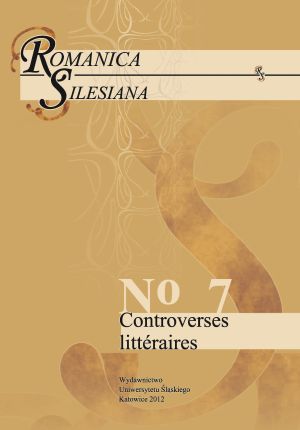

The second half of the 19th century was a period of great transformations: science and painting entered the novel, the novel itself evolved to the point of breaking up, authors were looking for new forms of expressions. The representatives of naturalism took the novel away from its traditional role. After all, naturalism marked the novels’ death, but it was in the novel that this movement was obliged to realize its objectives. Naturalists assigned a new target to the novel, which was no longer aesthetic, but scientific. The novel was not a simple fictive story, but aimed at becoming a serious study. The novelists’ purpose was to “dissect” their characters, their passions and emotions, based on profound determinism. Zola wanted to make an “exact and meticulous copy of life”; Huysmans intended to “dissect love” and presented himself as a “beast exhibitor”; Goncourt chose a model based on history. Zola was most involved in his scientific theories, wishing to follow Claude Bernard to the point of replacing, in his book, the word “doctor” by the word “novelist,” in order to obtain a model of literary creation. Zola seemed convinced that objectivity is possible in this type of work, but his experiments took place in an imaginary world. He did not realize his program entirely though, and remained relatively faithful to the traditional rules of novel writing. He proclaimed his hunger for a revival in literature and he moved away from the naturalist principles. Other writers, like Huysmans or the signatories of the famous “Manifest of the Five,” criticized the naturalist errors and insufficiencies. This kind of criticism was heard everywhere: henceforth, it was clear that naturalism was soon to be replaced by something else. The interest in the Russian novel and Wagner’s music can be listed among the signs of this renewal. They suggest a profound need for another, irrational way of thinking. Music and painting contributed to the transformation of the novel, too, and witnessed a need for an opening, experienced by naturalists. One may conclude that degeneration of this movement was slow and progressive, and partially resulted from the principles of the movement itself.
Key words: Science, roman, modification, art.
Télécharger les fichiers
Règles de citation

Vol. 7 (2012)
Publié: